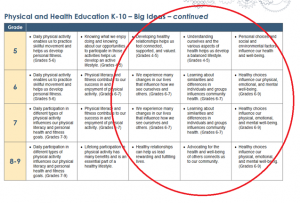![]() This question will be the focus of my post. The statement “Technology in the classroom enhances learning” was appropriate for the debate, and both sides argued their points extremely well. I choose “disagree” in the pre-vote, and “agree’ in the post-vote and have to lean towards the “disagree” side in this post. I appreciated how both sides discussed pedagogy as an important consideration that must be included in the discussion. I remember a speaker I once heard at a Primary Teachers’ Conference. She was an experienced teacher and was speaking of pedagogy. She told a story of “busy work,” In the world of primary teachers, that means things like worksheets and coloring activities. She said that sometimes there is a time and place for busy work; the teacher may need to work one-on-one with an individual student or with a small group of students, and the rest of the class needs to be kept busy. She said that doing this, is not the issue. The real issue is thinking busywork is educationally relevant when it is clearly not. In other words, know why you ask the students to complete activities and ensure they enhance learning. The same can be said for technology; make sure that learning is the end game with whatever techie activity you ask of the students.
This question will be the focus of my post. The statement “Technology in the classroom enhances learning” was appropriate for the debate, and both sides argued their points extremely well. I choose “disagree” in the pre-vote, and “agree’ in the post-vote and have to lean towards the “disagree” side in this post. I appreciated how both sides discussed pedagogy as an important consideration that must be included in the discussion. I remember a speaker I once heard at a Primary Teachers’ Conference. She was an experienced teacher and was speaking of pedagogy. She told a story of “busy work,” In the world of primary teachers, that means things like worksheets and coloring activities. She said that sometimes there is a time and place for busy work; the teacher may need to work one-on-one with an individual student or with a small group of students, and the rest of the class needs to be kept busy. She said that doing this, is not the issue. The real issue is thinking busywork is educationally relevant when it is clearly not. In other words, know why you ask the students to complete activities and ensure they enhance learning. The same can be said for technology; make sure that learning is the end game with whatever techie activity you ask of the students.
I appreciated the depth and breadth of the article “Class, Take Out Your Tablets: The Impact of Technology on Learning and Teaching in Canada”. Thank you for giving us a Canadian-based article! I could relate to the section on broadband connectivity.
“ Many educators noted that smaller or more isolated communities often suffer from limited bandwidth, slow satellite internet technologies, or intermittent service. While it is well-known that there are significant connectivity challenges in northern Canada, several interviewees expressly stated that poor connectivity was a prominent issue on Indigenous reserves and in rural regions, which impacted both students and educators, alike.” (Ivus, M., Quan, T., Snider, N., 2020, p. 24).
Welcome to my life, the times I could not teach because of connectivity issues. This is a real issue in the North and speaks to the fact that access to technology is not equal or equitable. The article should have discussed the reasons why connectivity issues exist in the North, the main one being a lack of competition between companies. Northwestel is the only Internet provider for the North (Okay, there is Elon’s Starlink, but that is a blog post for another day)

I also could relate to the video: Why Technology can’t fix education. I completely agree that technology can not replace the teacher. We are social beings, and we need each other. Our brains are hard-wired to learn from a human face. Take a look at this TedTalk.
Research was completed to understand how babies learn a language, no babies were harmed! There are around 6000-7000 languages currently spoken on the planet, and babies are born with the ability to speak any of the languages. The research discussed in the Tedtalk shows that babies “take statistics” when they listen to people speak and use the statistics to help them recognize and speak a language. As part of the research babies born to English speakers listened to a person speak Mandarin for 12 sessions, and the babies demonstrated that they learned Mandarin. Another group of babies listened to someone speak Mandarin on a TV, and the third group of babies were exposed to audio only. No learning happened for the babies in the 2nd and 3rd groups. The research found that it takes a human being for babies to take their statistics. This does not change once kids enter school, they continue to learn best from a human being.
My final point also relates to how our young learners learn best. There is an early learning teaching philosophy called “Reggio Emilia”. There is too much to say about Reggio in this blog post but central to the philosophy is that the teaching environment is the 3rd teacher (the other 2 teachers are the child and the educator). If one believes this to be true, then what educators DO in the classroom matters. Our teaching methods (pedagogy), the curriculum, the learning materials, and the technology used in classrooms matter. Teaching is the art and science of creating relationships. Technology can assist in this but can not replace the human connection that is at the heart of teaching. Will and Mike shared a great metaphor in their opening statement when they compared technology to a carpenter’s tool belt. Technology is one tool that teachers have, and it is important that it is used correctly.



